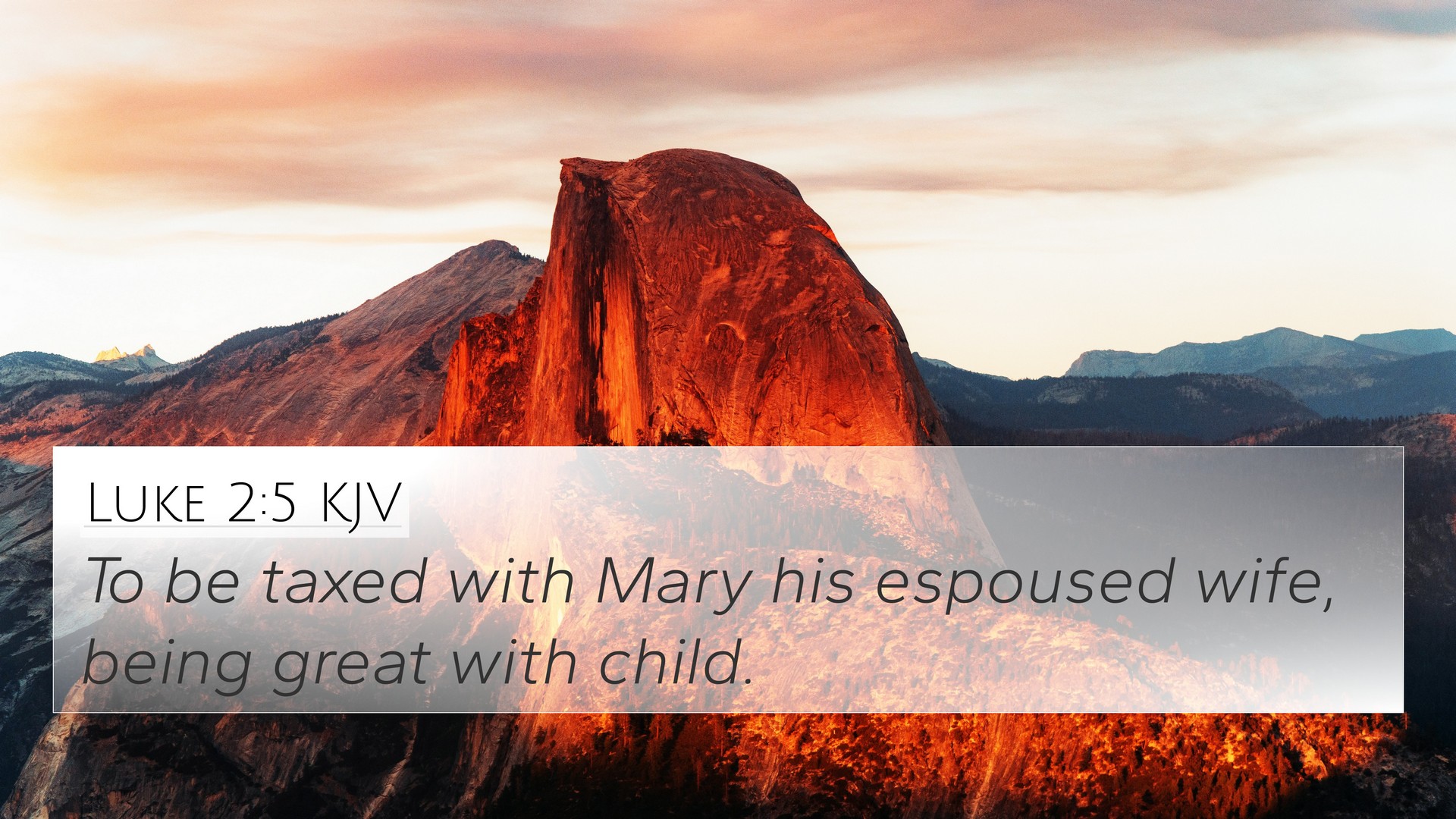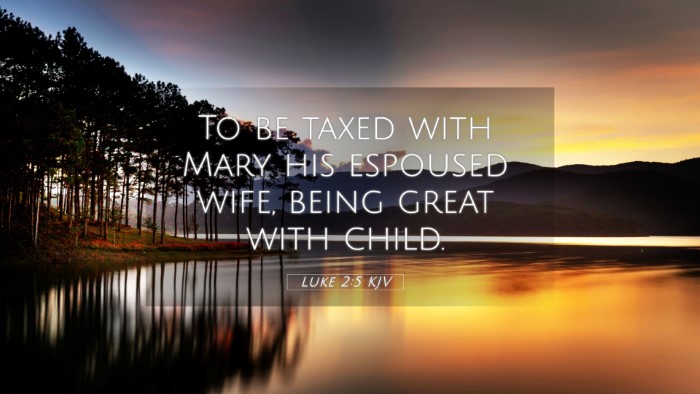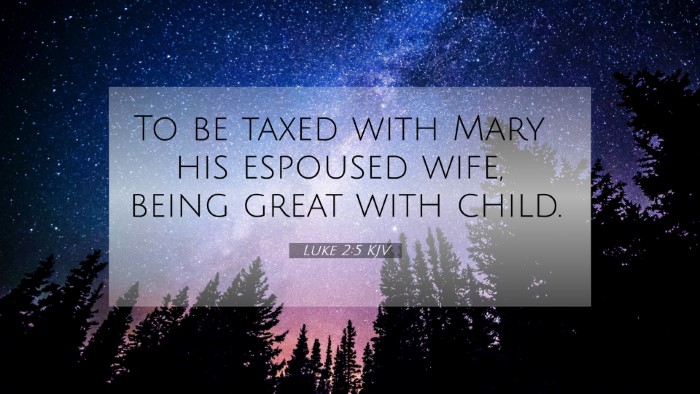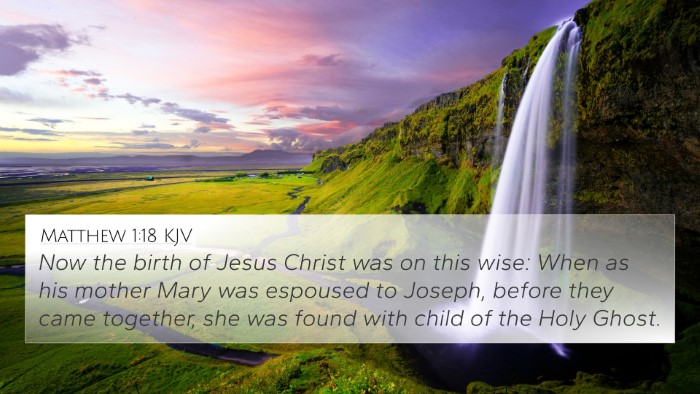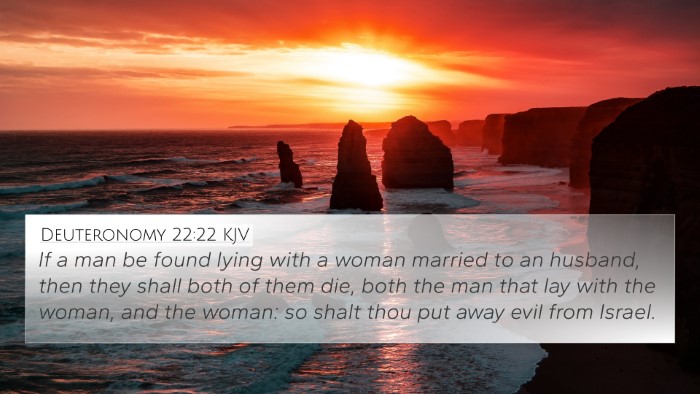Understanding Luke 2:5
Bible Verse: Luke 2:5 - "To be registered with Mary, his espoused wife, being great with child."
This verse marks a pivotal moment in the biblical narrative, presenting the circumstances surrounding the birth of Jesus Christ. Below is a comprehensive exploration of its meaning, along with cross-references to illuminate its significance within the broader biblical context.
Meaning and Interpretation
Luke 2:5 captures the obedience of Joseph and Mary to the Roman decree for a census. This act showcases their faithfulness and the prophetic fulfillment of Scripture. Through an examination of public domain commentaries, we can derive a deeper understanding of this verse.
Matthew Henry's Commentary
Matthew Henry emphasizes the obedience of Joseph in traveling to Bethlehem with Mary. He highlights how this journey was not merely a bureaucratic requirement but a divine orchestration in fulfilling the prophecy from Micah 5:2, which foretold the Messiah’s birthplace. Henry reflects on the challenges faced by Mary, who was heavily pregnant, and the implications of their situation amidst societal pressures.
Albert Barnes' Notes
Albert Barnes focuses on the historical and social context of the census. He explains that the Roman Empire required everyone to register in their ancestral towns, thus necessitating Joseph and Mary’s journey to Bethlehem. Barnes points out that this registration was crucial for fulfilling God’s plan, as it placed Jesus in the prophesied location. He also comments on the character of Joseph, noting his righteousness and compassion towards Mary during this critical time.
Adam Clarke's Commentary
Adam Clarke elaborates on the implications of Mary being "great with child," indicating the extraordinary nature of the birth of Jesus. He describes the journey's hardship and emphasizes the faith shown by both Joseph and Mary. Clarke offers insights into the societal expectations they faced, underlining the significance of their role as instruments of God's promise.
Cross-References
Luke 2:5 connects with several other biblical passages that enhance our understanding:
- Micah 5:2 - Prophecy of Christ's birth in Bethlehem.
- Matthew 1:18-25 - Narrative of Mary's conception by the Holy Spirit.
- Isaiah 7:14 - Prophecy about the virgin birth.
- Matthew 2:1 - The visit of the Magi to Jesus after His birth in Bethlehem.
- Luke 1:26-38 - The Annunciation to Mary about her miraculous conception.
- Luke 1:39-45 - Mary's visit to her cousin Elizabeth during her pregnancy.
- Romans 1:3 - Reference to Jesus being descended from David according to the flesh.
- Revelation 12:5 - Symbolic representation of the birth of Christ.
- Genesis 49:10 - Prophecy that the scepter would not depart from Judah, tying to the lineage of Christ.
- Hebrews 7:14 - Affirmation of Jesus' connection to the tribe of Judah.
Thematic Connections
The themes of obedience, divine purpose, and prophecy fulfillment intertwine in Luke 2:5. Here, we see Joseph and Mary exemplifying faithfulness amidst trials, demonstrating a model for believers. Their journey to Bethlehem highlights the importance of following God's plan, even when circumstances seem challenging.
Comparative Bible Verse Analysis
In conducting a comparative study of related scriptures, one can see how Luke 2:5 not only narrates the events leading to Jesus' birth but also reflects the overarching themes found throughout the Scriptures regarding God's promise of a Savior and His faithfulness to His people.
Using Bible Cross-References
Engaging in cross-referencing enhances our biblical knowledge and understanding. Here are some tools and methods for effective study:
- Utilizing a Bible concordance can help locate specific themes and words across various scriptures.
- A cross-reference Bible study guide assists in identifying connections between verses more systematically.
- Implementing cross-referencing Bible study methods encourages deeper exploration of interrelated passages.
- Engaging in Bible chain references allows for spanning topics across the Old and New Testaments.
- Using comprehensive Bible cross-reference materials can enrich your understanding during sermon preparations or personal studies.
Inter-Biblical Dialogue
Luke 2:5 serves as a bridge for understanding the connections between various biblical narratives. The dialogue between the Old and New Testaments becomes particularly vivid when we examine prophetic fulfillments, such as the lineage of Christ and the manner of His arrival in the world.
As readers delve into the connections and thematic elements present in Luke 2:5, they are invited into a richer understanding of the Bible's grand narrative, showcasing God's unwavering covenant with humanity.
Conclusion
Luke 2:5 is more than a historical account; it is a profound reminder of God's orchestration in bringing forth His Son. Through cross-referencing and thematic analysis, we uncover the layers of meaning that continue to inspire and guide believers today. The connections between Bible verses serve not only to deepen understanding but also to illustrate the continuity of God's work throughout history.
